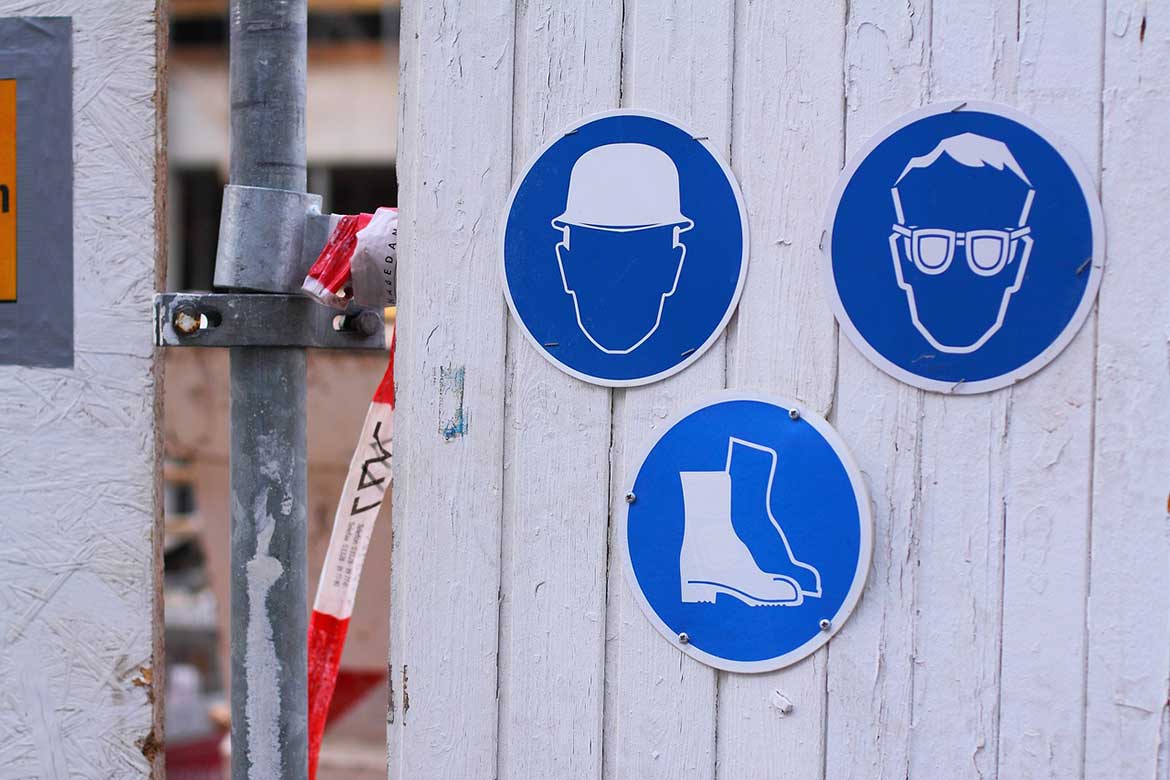9th January, 2024
Why People Ignore Health And Safety Rules (And 9 Ways To Fix It)
You can avoid accidents and ill-health at work when you work safely. So why do employees ignore health and safety rules when it puts them and other people in danger? And how can you fix it and stop people from breaking the rules?

Putting health and safety rules in place helps avoid accidents, comply with the law, and protect people in your business. But not if they get ignored! Getting your employees to follow health and safety rules is essential for them to work.
In this blog post we will look at the common reasons people ignore health and safety rules, and the ways you can fix them:
- They don't know about the rule
- They don't understand the rule
- They don't know why they need the rule
- They think the rule doesn't apply to them
- They disagree with the rule
- There are too many rules
- The rule takes too much time
- No one follows the rules
- You don't enforce the rule
1. They don't know about the rule
Most of the time, rule-breaking happens by accident. Maybe the worker isn't ignoring the health and safety rule - they don't know about it (or have forgotten about it!).
Before you assume someone is ignoring a health and safety rule, check if they know what they should be doing in the first place. Often, a gentle reminder will get people to do the right things.
- Are they new or experienced?
- Have they had the training they need?
- Have they been told about the rule?
- Do they do the task regularly?
- Could they have forgotten about the rule (especially if they haven't done the activity for a while)?
✅ Tell workers the rules in inductions, training and activity briefings. Display reminders and user refreshers so people don't forget.
2. They don't understand the rule
Maybe the worker does know about the health and safety rule, but they don't understand it. If it is too complicated - or they see it as too difficult - they could ignore it because they can't understand it.
They don't know how to follow the rule!
If the rule is complex, extra training might be needed so that people get the confidence they need to use the equipment or controls provided.
If the rule is simple to do but hard to explain, maybe you could give a demonstration or use a diagram to explain it in more simple terms.
- Have they been trained on any equipment or controls needed?
- Is the rule too complex or complicated?
- Could the rule be made simpler?
- Could the rule be communicated more clearly?
✅ Describe the rule in easy-to-follow language, avoid jargon, and use diagrams and pictures if it helps to explain.
3. They don't know why they need the rule
You might have told people about the rule, but do your employees and workers know why?
Because health and safety rules are not in place to make worker's lives difficult, they are there to make people's lives safer.
People are more likely to ignore or break the rules if they don't know why they need it. What's the point? What does it matter?
For example, if you need to wear a dust mask, but it means taking 2 minutes to go and change the filters, some workers might think they can save that two minutes and finish sooner - especially if it's a quick task.

"It will only take a minute. I won't get hurt. What's the harm?"
If you get told that the dust is hazardous and inhalation can develop into an incurable cancer, you are much less likely to break the rule. After all, saving 2 minutes now is not worth risking a slow and painful death!
People can often think they are at less risk than others and are in more control of their own health and safety - so explain how collective measures protect them and their teammates too.
- They don't know the purpose of the rule
- They don't perceive the risk
- They don't believe they are in danger
✅ Don't just tell employees what the rules are, explain why they are needed and how they keep people safe. Remove any rules that don't have a valid reason.
4. They think the rule doesn't apply to them
Some people genuinely think the rule doesn't apply to them. For example, if a manager does a walk around in an area of the site that requires safety boots, but they don't have any on. Maybe they have forgotten to change their shoes from their usual office environment. Or maybe they think the rule doesn't apply to them because it's a quick walk around and they are not doing any physical work.
And because they are senior to the workers in that area, everyone feels a bit awkward about bringing it up.
But if one person breaks the rules, other people will think they can ignore the rules too. And it gives them a good excuse if they get caught breaking the rules.
"I didn't think I needed to because Alex wasn't doing it on Friday?"
It undermines your health and safety culture and makes other workers more likely to break the rules.
- Do the rules apply to everyone?
- Does everyone follow the rules?
- Do some people think they are above the rules?
- Do you lead by example?
- Do you reward people if they bring up a health and safety issue?
✅ Give workers a briefing before they work or enter a new area. Display health and safety signs and reminders for what people need to do.
5. They disagree with the rule
Sometimes people might know about the rule, understand it, and know why it's there - but ignore it because they disagree with it.
And not necessarily because they are being difficult - although sometimes that might be the case in which case you need to enforce the rules (see item 9).
But maybe they think they know better. Maybe they do know better. Maybe the rule doesn't work how you expected it to.
If employees disagree with a rule, a conversation or meeting might be a good way to solve the problem. Why do they disagree with the rule? Do they have valid concerns?

By the end of the discussion, you might have some changes that can please everyone and better protect health and safety.
Or, you might find that workers are resistant to change and do not find a better solution. But by having the meeting, listening to their concerns, and explaining why there are no better or safer alternatives - they might start following the rules.
- Does the rule work?
- Are there better ways to protect workers?
- Do workers agree with the rule?
- Do they have any other suggestions?
✅ Involve your team in creating rules and safe systems of work. They are more likely to follow and remember the rules they helped to create.
6. There are too many rules
Remembering one rule is easy. Three rules...? Yep, that shouldn't be a problem. Forty rules...? Not a chance!
Think about how many rules your employees need to remember in their day-to-day tasks. Is it too much to remember?
If a safe working procedure is lengthy and involves many steps, then a method statement or written instructions will be much easier to follow than trying to memorize what they need to do.

And when you have multiple rules, make sure they don't contradict each other and are compatible together. People are more likely to ignore rules if they don't know which rule works or which one to follow.
- Is there too much to remember?
- Are rules compatible with each other?
- Do rules contradict each other?
✅ Check that rules work well together and remove any unnecessary rules if they are no longer needed.
7. The rule takes too much time
Some rules are quick and easy, like putting on some ear defenders. But some health and safety rules take longer, like draining down a system or doing a fire watch hours after a hot work activity is finished.
If the rule isn't considered when you are planning work, or people are rewarded for completing work quickly, you might be encouraging people to ignore the rules.
- Can you make it easier to comply with the rule?
- Are deadlines realistic?
- Does breaking the rules make it easier to hit targets?
✅ Make sure targets and deadlines allow for safe behaviours.
8. No one follows the rules
If other people in the workplace are ignoring the rules, then everyone is likely to ignore them. For example, new workers will copy what more experienced workers are doing, even if it puts them in danger.
A worker won't want to look like they are overreacting or being too cautious if other people aren't worrying about the rules. A supervisor might not want to be seen as too strict or unfair if other supervisors aren't putting rules in place.
- How do other people act towards the rules?
- Is there peer pressure?
- Is ignoring the rules the norm?
- Do you have a good health and safety culture?
✅ Encourage people to challenge and report rule breaks, and grow a positive health and safety culture within your workplace.
9. You don't enforce the rule
Once people know about the rules, understand the controls, agree with the rules, and the rules are consistent, compatible, clear, and (as much as possible) easy to follow - you need to enforce them.
Because even the best rule could get ignored once by mistake. Maybe George forgot to use the guard. Or Claire cut through an enclosure. But it went unchallenged.
And since the rule-break wasn't enforced the first time, someone else does it.

And before you know it, no one follows the rules (see the previous section).
- Do you enforce the rule?
- Are there consequences for ignoring rules?
- Are people rewarded for reporting rule breaks?
✅ Enforce rules the first time you see them broken, no matter who by or who reports it. The first time it's ignored, check the rule is understood and explain the rule, and why it is needed.
Get your team up to speed with health and safety topics and guidance with our online toolbox talks. These daily refreshers will help to remind your team of their health and safety responsibilities.
This article was written by Emma at HASpod. Emma has over 10 years experience in health and safety and BSc (Hons) Construction Management. She is NEBOSH qualified and Tech IOSH.
Better health and safety...
We are here to help you and your business put safety in everything.
Learn MoreRecent posts like this...

HSE Fee For Intervention Charges Explained
FFI stands for 'fee for intervention', which was introduced under the Health and Safety (Fees) Regulations 2012. FFI aims to recover the HSE's costs, including inspection, investigation and enforcement action, charging businesses that are in breach of health and safety regulations.
Read Post
How To Plan For Better Health And Safety At Work
If you want better health and safety, you need to plan for it. And who doesn't want to stay safer and have fewer accidents and ill health in their workplace? In this blog post, we look at how to plan for better health and safety at work.
Read Post
No Injuries, No Health And Safety Problems!?
It's been over a year since the last injury in your workplace. But just because you haven't had any accidents doesn't mean you are safe or that your health and safety performance is good. Your accident reporting system might just be hiding the truth. No injuries, no problems!? Don't count on it.
Read Post